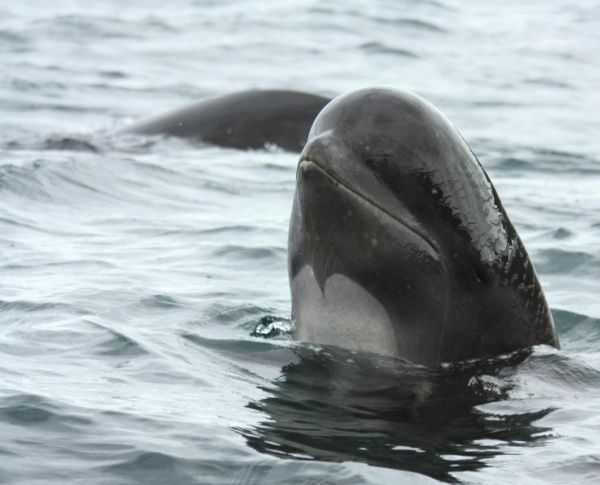Facts About Long-finned pilot whale
The long-finned pilot whale is a remarkable species of oceanic dolphin, easily recognized by its elongated pectoral fins. Belonging to the genus Globicephala, it is distinguished by its social nature, complex communication, and unique physical characteristics. Initially classified as Delphinus melas, the species was later renamed Globicephala melaena before ultimately reverting to its original classification, Globicephala melas. The name "pilot whale" originates from the belief that these whales follow a leader within their groups.
These whales exhibit sexual dimorphism, with males being larger than females. They typically have striking black or dark grey bodies with lighter grey or white markings. Renowned for their social behavior, long-finned pilot whales often gather in pods ranging from 20 to 150 individuals. Genetic studies indicate that their social structures are matrilineal, meaning calves remain with their mothers throughout their lives.
Long-finned pilot whales communicate using a variety of sounds, including echolocation clicks. They are also known for their unfortunate propensity for mass strandings, particularly in New Zealand. While the exact reasons for this behavior are not fully understood, it is believed to be linked to their strong social bonds. These whales are found in the North Atlantic and the Southern Hemisphere, with historical sightings in the western North Pacific.
Efforts to conserve long-finned pilot whales have led to their inclusion in several international agreements due to their precarious conservation status. They face threats from whaling practices, particularly in the Faroe Islands, and from historical hunts in other regions. Additionally, these whales play a significant role in whale-watching tourism, particularly in eastern Canada, providing economic benefits to local communities.
Despite their relative abundance, accurate population estimates are still lacking, prompting the International Union for Conservation of Nature (IUCN) to classify them as "Data Deficient." The species' complex social behavior, communication methods, and susceptibility to mass strandings underscore the need for continued research and conservation efforts to ensure their protection in the wild.

 Turkey
Turkey